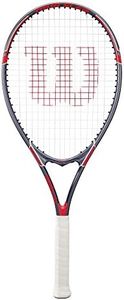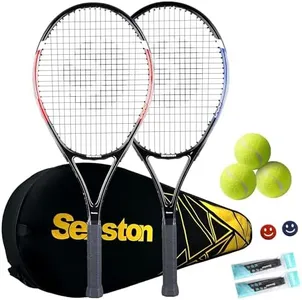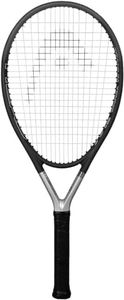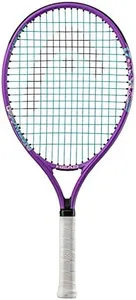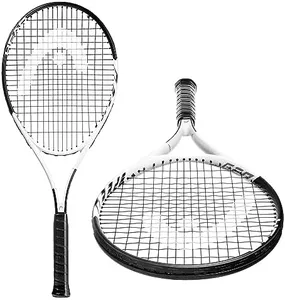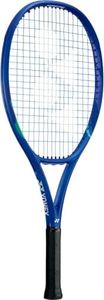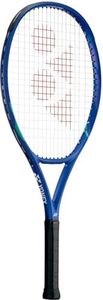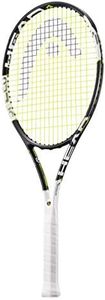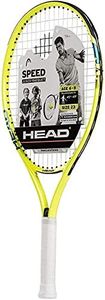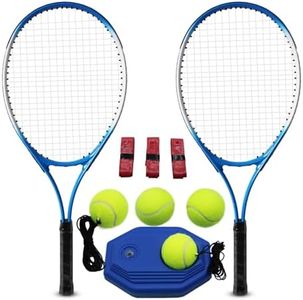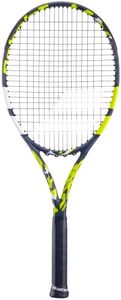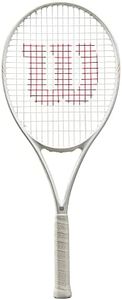We Use CookiesWe use cookies to enhance the security, performance,
functionality and for analytical and promotional activities. By continuing to browse this site you
are agreeing to our privacy policy
10 Best Tennis Racquets For Beginners
From leading brands and best sellers available on the web.Buying Guide for the Best Tennis Racquets For Beginners
Choosing the right tennis racquet as a beginner can make learning the game smoother and more enjoyable. A racquet that's comfortable and suited to your playing style will help you develop good technique and enjoy the sport from the start. Rather than choosing the racquet that looks best or is marketed as 'professional', focus on features that make playing easier while you build your skills.Racquet WeightRacquet weight refers to how heavy the racquet feels in your hand. This is important because lighter racquets are easier to handle and swing, which is helpful for beginners. Heavier racquets offer more power and stability, but can be difficult to maneuver if you're just starting out. Typically, beginner racquets are considered lightweight (250-275 grams), making them easier to control. As you become more experienced, you might consider a medium (275-300 grams) or even heavier racquet if you want more power and don't struggle with the weight. For most beginners, a lighter racquet helps prevent fatigue and injury while learning the basics.
Head SizeHead size is the area of the racquet's stringed surface. A larger head size provides a bigger sweet spot, which makes it easier to hit the ball cleanly and with power. For beginners, racquets with a 100-115 square inch head size are often recommended because they are more forgiving on off-center hits and help you build confidence. Smaller head sizes (below 100 square inches) offer more control, but they make the game harder for beginners who are still working on their accuracy. Selecting a racquet with a bigger head size helps new players have a more fun and less frustrating experience.
Grip SizeGrip size is how thick the handle of the racquet is. A correct grip size makes the racquet comfortable to hold and reduces the risk of injury. If the grip is too small, your hand will tire quickly and you might develop blisters; if it's too large, it can be hard to hold and swing freely. Grip sizes are usually measured in inches or millimeters, and most adults need a grip size between 4 1/8 to 4 3/8 inches. To find your size, you can try holding different racquets in-store, or measure the distance from the tip of your ring finger to the bottom lateral crease of your palm. Picking the right grip size is a personal comfort decision that makes learning easier.
LengthTennis racquet length is typically around 27 inches for adults and slightly shorter for juniors. Standard adult racquet length (27 inches) is recommended for beginners because it offers a good balance of reach and control. Longer racquets can give you more reach and power, but they are harder to maneuver, especially for those who are new to the sport. For most people just starting out, sticking with the standard length helps them swing comfortably and focus on building good technique.
BalanceBalance describes how the racquet's weight is distributed. A 'head-heavy' racquet has more weight in the head, offering more power but less maneuverability. A 'head-light' racquet feels lighter at the tip and more weight in the handle, making it easier to swing and control. Beginners usually benefit from even or slightly head-light balanced racquets because they provide easier handling and don't tire out your wrist as quickly. As your skills improve, you can experiment with different balance types based on whether you prefer more control or power.
String PatternThe string pattern refers to how closely the strings are spaced on the racquet. Open patterns (fewer strings) give more spin and a softer feel, while denser patterns (more strings) provide more control and last longer before breaking. For beginners, the difference in string pattern isn't as crucial as other factors, but a slightly open pattern can help you learn to generate spin and feel the ball better. As your playing style develops, you may come to prefer one over the other, but at first, focus on comfort and forgiving play.
Frame StiffnessFrame stiffness means how much the racquet bends when hitting the ball. Stiffer frames provide more power but less comfort, while more flexible frames offer better shock absorption and more feel. Beginners generally do well with moderate stiffness, as too stiff a racquet can lead to discomfort in the arm, and too flexible can feel sluggish. Look for a racquet that feels comfortable when you swing it—something that doesn't send too much vibration to your arm and helps you develop your swing.
